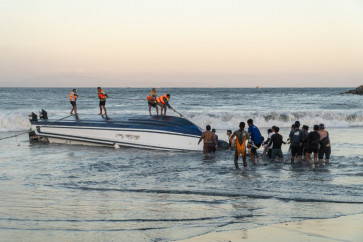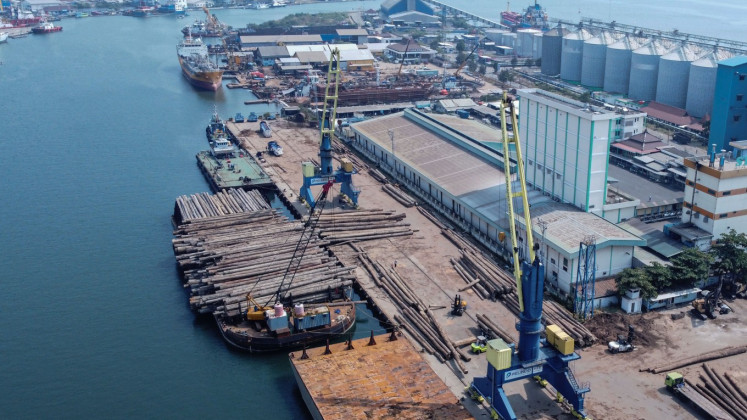Popular Reads
Top Results
Can't find what you're looking for?
View all search resultsPopular Reads
Top Results
Can't find what you're looking for?
View all search resultsSubstantial floods may hit Jakarta in January: BNPB
The National Disaster Management Agency (BNPB) said on Wednesday that Jakarta would likely be hit by big floods during the peak of the rainy season in January
Change text size
Gift Premium Articles
to Anyone
T
he National Disaster Management Agency (BNPB) said on Wednesday that Jakarta would likely be hit by big floods during the peak of the rainy season in January.
Sutopo Porwo Nugroho, an agency spokesman, said that the city’s rivers and waterways did not have the capacity to drain water from torrential rains quickly enough to prevent flooding.
“All areas in the capital are vulnerable to flooding when 300 to 400 millimeters of rain per hour hits the city,” Sutopo told reporters at the BNPB office in Central Jakarta. The normal rain rate in the city is between 50 and 100 millimeters per hour.
“It would be difficult for the city to avoid flooding,” he said, adding that 13 rivers and two flood canals passing through the capital would be of little use during very hard rain.
The agency said that each of the main waterways only had the capacity to drain between 17 and 80 percent of rain water during downpours.
Among rivers with low-drainage capacities are Ciliwung River, which has the capacity to drain only 17 percent of rain water, Krukut River with 37 percent and Pesanggrahan with 21 percent.
Sutopo said that low drainage capacities were caused by the reduced width of rivers and shallow areas due to sedimentation. “Low drainage capacity leads to overflowing rivers and later to floods,” he said.
The situation is made worse with only 9 percent of Jakarta designated as a green area, which helps to absorb rain. In addition, 40 percent of the city is below sea level.
Sutopo said the BNPB would help to mitigate any disaster only if the local administration failed to do so.
The Meteorology, Climatology and Geophysics Agency (BMKG) has estimated that rainfall will peak in January and February. Substantial floods hit the capital during these months in 1996, 2002 and 2007.
Furthermore, the US National Oceanic and Atmospheric Administration (NOAA) forecasted that Indonesia would experience 70 percent more rain than normal this season due to the “La Niña” climate phenomenon, which is associated with cooler-than-normal temperatures in the equatorial Pacific Ocean.










